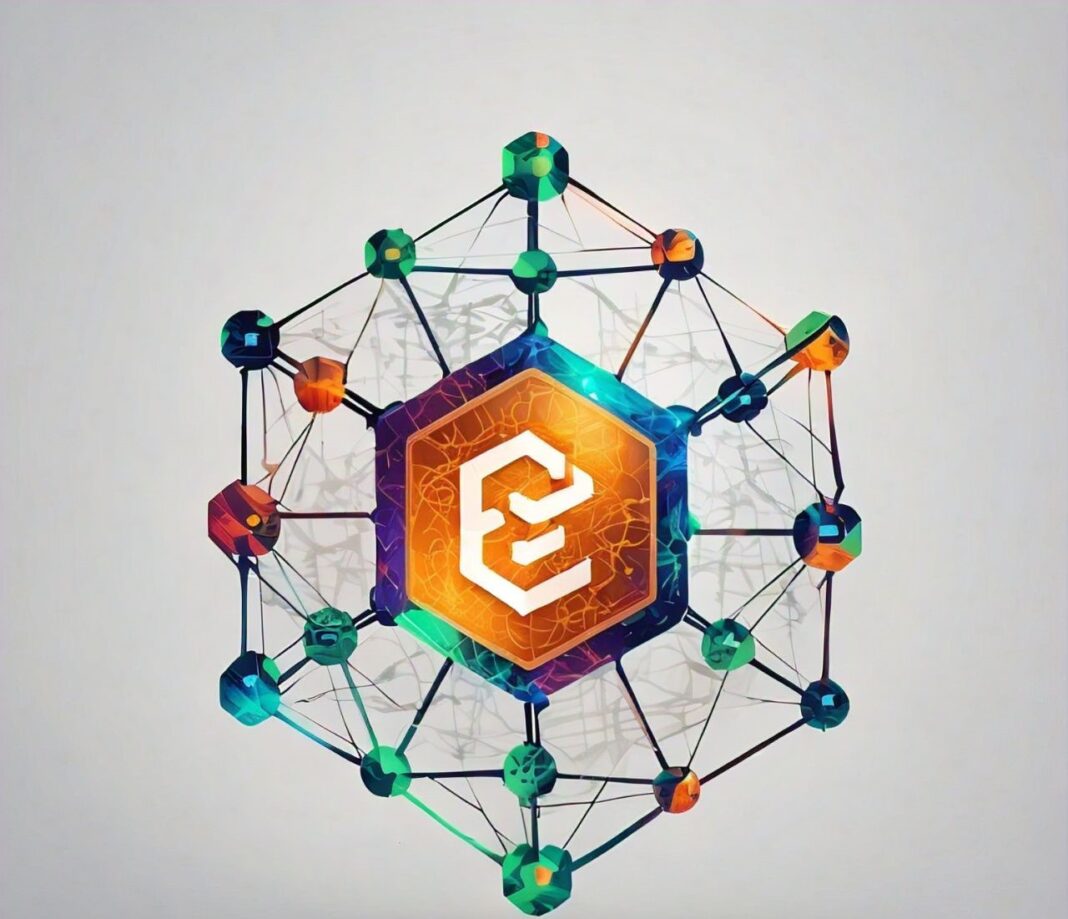In today’s rapidly evolving technological landscape, Distributed Ledger Technology (DLT) has emerged as a transformative force across various sectors. At its core, DLT represents a decentralized approach to recording and managing digital transactions, offering a robust alternative to traditional centralized databases.
What is Distributed Ledger Technology?
Distributed Ledger Technology encompasses a range of technologies designed to distribute data across a network of computers, or nodes, rather than relying on a central authority. Unlike traditional databases that store data in a central location, DLT ensures that each participant in the network has access to the same data, updated simultaneously across all nodes. This decentralized nature is fundamental to the technology’s ability to enhance transparency, security, and resilience against tampering or fraud.
Importance in the Modern Tech Landscape
DLT has gained prominence due to its potential to revolutionize how transactions are processed and recorded. By removing intermediaries and leveraging consensus mechanisms, DLT not only improves efficiency but also introduces new paradigms for trust and verification. This is particularly evident in the financial sector, where blockchain—the most well-known implementation of DLT—has redefined the possibilities for cryptocurrencies and financial transactions.
Purpose of the Article
This article aims to provide a comprehensive understanding of Distributed Ledger Technology, tailored for blockchain enthusiasts seeking to deepen their knowledge. We will delve into the core concepts of DLT, explore how it operates, and examine its various types and applications. By the end of this article, readers will gain a clear and nuanced perspective on how DLT works and why it is a pivotal innovation in the digital age.
What is Distributed Ledger Technology?
Definition and Explanation
Distributed Ledger Technology (DLT) refers to a decentralized digital system for recording and managing transactions across multiple computers or nodes. Unlike traditional databases, where a central authority manages and maintains the records, DLT operates on a distributed network where each participant holds a copy of the entire ledger. This decentralized nature ensures that no single entity controls the entire system, fostering greater transparency and trust among participants.
The core idea behind DLT is to enable a consensus among distributed nodes about the state of the ledger. Each transaction is verified by multiple nodes before being added to the ledger, which enhances the integrity and reliability of the data. This approach contrasts sharply with traditional systems, where a central server is responsible for maintaining and validating records, often leading to single points of failure and potential security vulnerabilities.
Also Read: Cryptocurrency Storage: Top Security Methods and Best Practices

Historical Context
The concept of distributed ledgers has evolved significantly over time. The earliest instances of distributed systems can be traced back to the development of early computer networks and cryptographic protocols. However, DLT gained substantial traction with the advent of blockchain technology, introduced by Bitcoin in 2009. Bitcoin’s blockchain demonstrated a practical implementation of DLT, combining cryptographic security with decentralized consensus to create a reliable and tamper-resistant digital currency.
Following Bitcoin, various other implementations of DLT emerged, each offering unique features and improvements. Technologies like Ethereum introduced smart contracts, further expanding the use cases of DLT beyond financial transactions. Over the years, DLT has continued to advance, with innovations such as Directed Acyclic Graphs (DAGs) and hybrid systems that seek to address some of the limitations of traditional blockchains.
Key Milestones in DLT Development
- Bitcoin and Blockchain (2009): The launch of Bitcoin and its blockchain marked the first successful application of DLT for digital currency, demonstrating the potential for decentralized, secure, and transparent transactions.
- Ethereum and Smart Contracts (2015): Ethereum introduced the concept of smart contracts, which are self-executing contracts with the terms directly written into code. This expanded the capabilities of DLT to include programmable and automated agreements.
- Rise of Alternative DLTs (2016-Present): Following Ethereum, various alternative DLT solutions emerged, including platforms utilizing DAGs, such as IOTA, and enterprise-focused solutions like Hyperledger Fabric. These developments aim to address scalability, speed, and flexibility concerns.
- Integration with Emerging Technologies (2020-Present): Recent advancements see DLT integrating with other emerging technologies, such as Artificial Intelligence (AI) and Internet of Things (IoT), enhancing its utility and application across diverse fields.
Core Concepts of Distributed Ledger Technology
Decentralization
Decentralization is one of the fundamental principles of Distributed Ledger Technology. Unlike traditional systems where a central authority (such as a bank or government agency) controls and manages data, DLT distributes the responsibility across a network of independent nodes. Each node in the network maintains a copy of the ledger and participates in validating transactions.
The key benefits of decentralization include:
- Increased Security: By removing a central point of control, DLT reduces the risk of single points of failure and makes it more difficult for malicious actors to compromise the system.
- Enhanced Resilience: Distributed networks are less vulnerable to outages or disruptions, as the system can continue to operate even if some nodes fail.
- Greater Transparency: Decentralized systems ensure that all participants have access to the same data, fostering trust and accountability.
Consensus Mechanisms
Consensus mechanisms are protocols used by distributed networks to agree on the state of the ledger and validate transactions. These mechanisms ensure that all nodes in the network reach a common agreement without requiring a central authority. Common consensus algorithms include:
- Proof of Work (PoW): Used by Bitcoin, PoW requires nodes (miners) to solve complex cryptographic puzzles to validate transactions and add them to the ledger. This process is computationally intensive and helps secure the network by making it costly to attempt fraud.
- Proof of Stake (PoS): PoS allows nodes to validate transactions based on the amount of cryptocurrency they hold and are willing to “stake” as collateral. This method is less energy-intensive than PoW and is used by platforms like Ethereum 2.0.
- Byzantine Fault Tolerance (BFT): BFT mechanisms, such as Practical Byzantine Fault Tolerance (PBFT), enable nodes to reach consensus even if some nodes act maliciously or fail. BFT is often used in private and consortium blockchains where trust among participants is higher.
- Delegated Proof of Stake (DPoS): In DPoS, stakeholders elect a small number of delegates who are responsible for validating transactions and maintaining the ledger. This approach aims to improve scalability and efficiency.
Also Read: Best Cryptos to Invest in Now for High Returns
Immutability and Transparency
Immutability refers to the property of DLT that ensures once a transaction is recorded on the ledger, it cannot be altered or deleted. This is achieved through cryptographic hashing, where each block in a blockchain contains a hash of the previous block, linking them together in a secure chain. Any attempt to alter a past transaction would require changing all subsequent blocks, which is computationally infeasible.
Transparency is another key feature of DLT. All participants in the network can view the entire history of transactions recorded on the ledger. This openness enhances trust among participants and allows for easier auditability of transactions.
Smart Contracts
Smart contracts are self-executing contracts with the terms and conditions directly written into code. They automatically enforce and execute the terms of an agreement once predefined conditions are met. Smart contracts operate on platforms like Ethereum and offer several advantages:

- Automation: Smart contracts reduce the need for intermediaries and manual processing, streamlining operations and reducing costs.
- Accuracy: Automated execution minimizes human error and ensures that the contract terms are enforced as specified.
- Trust: The code’s transparency and immutability foster trust among parties, as the contract’s execution is guaranteed by the technology.
Examples of smart contract use cases include automated payment systems, decentralized finance (DeFi) applications, and supply chain management.
How Does Distributed Ledger Technology Work?
Architecture of Distributed Ledgers
Architecture of Distributed Ledgers involves several key components that work together to create a decentralized and transparent system. The basic structure of a distributed ledger includes:
- Nodes: Individual computers or devices participating in the network. Each node maintains a copy of the ledger and plays a role in validating and propagating transactions.
- Ledger: The digital record of transactions stored across all nodes. In a blockchain, this is organized into a chain of blocks; in other types of DLT, the structure may vary.
- Transactions: The fundamental units of data being recorded on the ledger. Transactions can represent various types of information, such as financial transfers, contractual agreements, or asset ownership.
- Consensus Mechanism: The protocol used by nodes to agree on the state of the ledger and validate transactions. This ensures that all nodes reach a common agreement without central control.
Process of Transaction Validation
The process of validating transactions in a distributed ledger involves several steps:
- Transaction Initiation: A transaction is created and broadcasted to the network. This transaction contains details such as the sender, recipient, amount, and other relevant data.
- Transaction Propagation: The transaction is propagated across the network, where it is received by multiple nodes.
- Transaction Verification: Nodes validate the transaction based on predefined rules and consensus mechanisms. This includes checking the digital signatures, ensuring that the sender has sufficient funds, and verifying that the transaction complies with the network’s protocols.
- Consensus: Nodes participate in a consensus process to agree on the validity of the transaction. Depending on the consensus mechanism, this may involve solving cryptographic puzzles (Proof of Work), validating stakes (Proof of Stake), or achieving agreement through voting (Byzantine Fault Tolerance).
- Inclusion in the Ledger: Once validated and agreed upon, the transaction is added to the ledger. In blockchain systems, this involves creating a new block that includes the transaction and linking it to the previous block. In other DLT systems, the process may differ based on the ledger’s structure.
- Propagation of Updates: The updated ledger is propagated to all nodes, ensuring that each participant has an up-to-date copy of the ledger.
Data Storage and Retrieval
Data Storage in distributed ledgers involves storing the transaction records in a decentralized manner. Each node maintains its copy of the ledger, ensuring redundancy and resilience. Data is stored in a structured format, such as blocks in a blockchain or directed acyclic graphs in DAG-based systems.
Data Retrieval involves accessing and querying the ledger to retrieve specific information. Nodes use various protocols to efficiently search and retrieve data from the ledger. The decentralized nature of DLT ensures that data retrieval is not dependent on a single central source, enhancing reliability and speed.
In summary, distributed ledger technology operates through a collaborative network of nodes, where transactions are validated, recorded, and stored in a decentralized manner. This process ensures the integrity, transparency, and resilience of the data.
Also Read: Airdrops & Rewards: Top Ways to Earn Free Crypto

Real-World Applications of Distributed Ledger Technology
Distributed Ledger Technology (DLT) has found numerous applications across various industries, demonstrating its versatility and transformative potential. Here, we explore some key areas where DLT is making a significant impact.
Finance and Cryptocurrency
Finance and Cryptocurrency are among the most prominent applications of DLT. Blockchain technology, a type of DLT, underpins cryptocurrencies such as Bitcoin and Ethereum, revolutionizing how financial transactions are conducted.
- Cryptocurrencies: Digital currencies that use blockchain to enable peer-to-peer transactions without intermediaries. Bitcoin, the first cryptocurrency, introduced the concept of decentralized money. Ethereum expanded on this by incorporating smart contracts, enabling a wide range of decentralized financial (DeFi) applications.
- Cross-Border Payments: DLT facilitates faster, more secure, and cost-effective international money transfers by removing intermediaries and reducing transaction fees. Platforms like Ripple and Stellar are designed specifically for this purpose.
Supply Chain Management
Supply Chain Management benefits greatly from the transparency and traceability offered by DLT. By recording every transaction in a distributed ledger, businesses can enhance the visibility and efficiency of their supply chains.
- Tracking and Traceability: DLT allows for real-time tracking of goods as they move through the supply chain. Each step, from production to delivery, is recorded on the ledger, providing a transparent and tamper-proof record.
- Counterfeit Prevention: By ensuring the authenticity of products and verifying their origin, DLT helps combat counterfeiting and fraud. This is particularly valuable in industries like pharmaceuticals and luxury goods.
Healthcare
Healthcare applications of DLT focus on improving data management, security, and patient care. The technology’s ability to provide a secure, immutable record of medical information has several advantages.
- Patient Records: DLT enables secure and interoperable electronic health records (EHRs) that can be accessed by authorized healthcare providers while maintaining patient privacy.
- Clinical Trials and Research: DLT can enhance the transparency and integrity of clinical trials by providing a verifiable record of trial data, reducing the risk of data manipulation and fraud.
Government and Public Services
Government and Public Services are increasingly exploring DLT to enhance transparency, reduce bureaucracy, and improve public sector efficiency.
- Voting Systems: DLT has the potential to create secure and tamper-proof voting systems, enabling more transparent and trustworthy elections. Blockchain-based voting can reduce fraud and increase voter confidence.
- Identity Management: Digital identities managed through DLT can offer a secure and decentralized way to verify and protect personal information. This can streamline processes such as passport issuance and welfare distribution.
Additional Applications
- Real Estate: DLT facilitates the secure and transparent transfer of property ownership, reducing the need for intermediaries and simplifying transactions.
- Intellectual Property: DLT can be used to manage and protect intellectual property rights, providing a clear and verifiable record of ownership and licensing.
Future Trends and Innovations in Distributed Ledger Technology
The landscape of Distributed Ledger Technology (DLT) is continuously evolving, with ongoing research and development driving innovations that promise to enhance its capabilities and applications. Here are some key trends and future directions for DLT:
Advances in Consensus Mechanisms
Energy-Efficient Consensus Algorithms
- Proof of Stake (PoS): PoS is gaining popularity as a more energy-efficient alternative to Proof of Work (PoW). By allowing participants to validate transactions based on their stake in the network, PoS reduces the computational power required, lowering energy consumption.
- Hybrid Models: Emerging consensus mechanisms combine elements of PoW and PoS or introduce new approaches, such as Proof of Authority (PoA) or Proof of Space (PoSpace), to balance energy efficiency with security and scalability.
Scalability Solutions
- Layer 2 Solutions: Technologies like the Lightning Network and state channels aim to address scalability issues by processing transactions off-chain and settling them on the main blockchain later. These solutions can increase transaction throughput and reduce fees.
- Sharding: Sharding involves dividing the blockchain into smaller, manageable pieces (shards) that can process transactions concurrently. This approach aims to enhance the scalability and efficiency of blockchain networks.
Integration with Emerging Technologies
Artificial Intelligence (AI) and Machine Learning
- Enhanced Security: AI can be used to detect anomalies and potential threats in DLT systems, enhancing security and preventing fraud.
- Automated Decision-Making: Machine learning algorithms can analyze transaction data and smart contract performance to optimize operations and improve decision-making processes.

Internet of Things (IoT)
- Secure Data Exchange: DLT can provide a secure and decentralized platform for IoT devices to exchange data and execute transactions autonomously.
- Supply Chain Automation: Integrating DLT with IoT can streamline supply chain management by enabling real-time tracking and automated updates based on sensor data.
Also Read: Financial Consultant in Wealth Management
Conclusion
Distributed Ledger Technology (DLT) represents a transformative shift in how we record, manage, and verify transactions across various sectors. Its decentralized, transparent, and secure nature offers significant advantages, including enhanced security, increased transparency, and improved efficiency. These benefits are driving the widespread adoption of DLT in areas such as finance, supply chain management, healthcare, and public services.
Distributed Ledger Technology has the potential to revolutionize various industries by providing a more secure, transparent, and efficient way to manage and validate transactions. By understanding its core concepts, exploring its real-world applications, and staying informed about future trends, stakeholders can better navigate the opportunities and challenges associated with this transformative technology.






